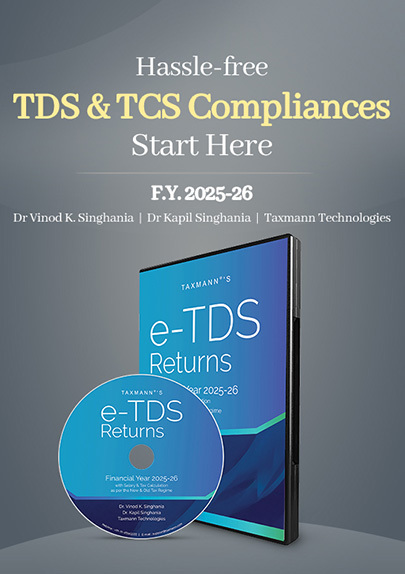Designated Authority Has No Power to Reopen a Concluded Settlement Under DTVSV Act | HC
- Blog|News|Income Tax|
- 2 Min Read
- By Taxmann
- |
- Last Updated on 13 January, 2025

Case Details: S A N Garments Manufacturing (P.) Ltd. vs. PCIT - [2025] 170 taxmann.com 242 (Delhi)
Judiciary and Counsel Details
- Vibhu Bakhru, ACJ & Tushar Rao Gedela, J.
- R. Santhanam and Rishabh Ostwal, Advs. for the Petitioner.
- Puneet Rai, SSC, Ashvini Kumar, Rishabh Nangia, JSCs and Nikhil Jain, Adv. for the Respondent.
Facts of the Case
The assessee filed its return of income for the relevant assessment year and declared its income. Subsequently, notice under section 148 was issued, and the assessment was completed by making certain additions. Aggrieved by the assessment order, the assessee preferred an appeal before the CIT(A).
During the pendency of the appeal, the Direct Tax Vivad Se Vishwas Act, 2020 (DTVSV Act) was enacted. The assessee made a declaration to settle the tax arrear. The Designated Authority (DA) issued Form No. 3 and Form No. 5, determining the balance amount payable and the amount deposited by the assessee. However, the DA again issued a fresh Form No. 3, which was a modified version of the earlier Form No. 3.
Aggrieved-assessee filed a writ petition before the Delhi High Court contending that the DA had effectively sought to reopen a concluded settlement.
High Court Held
The High Court held that Section 5(2) of the DTVSV Act mandates the DA to determine the amount payable by the declarant within a period of 15 days from the date of receipt of the declaration. Rule 7 of the DTVSV Rules expressly provides that the order of the DA with respect to the payment of the amount made by the declarant as per the certificate granted under section 5(1) shall be in Form No. 5.
It is clear that once a declarant is issued a certificate (Form No. 5) in terms of section 5 of the DTVSV Act, and the declarant deposits the determined amount, the DA is proscribed from initiating any action or proceedings in respect of the ‘tax arrear’. The dispute stands settled.
It was fairly stated that no provision under the DTVSV Act empowers a Designated Authority to reopen a concluded settlement. As noted above, a plain reading of the provisions of the DTVSV Act indicates that once a final certificate is issued under section 5(1), all disputes regarding the ‘tax arrear’ stand concluded.
In the instant case, the assessee deposited the determined amount and was issued Form No. 5 by the DA. Thus, all disputes with regard to the ‘tax arrear’ stood concluded. Therefore, the issuance of the impugned certificate was without the authority of law.
Disclaimer: The content/information published on the website is only for general information of the user and shall not be construed as legal advice. While the Taxmann has exercised reasonable efforts to ensure the veracity of information/content published, Taxmann shall be under no liability in any manner whatsoever for incorrect information, if any.

Taxmann Publications has a dedicated in-house Research & Editorial Team. This team consists of a team of Chartered Accountants, Company Secretaries, and Lawyers. This team works under the guidance and supervision of editor-in-chief Mr Rakesh Bhargava.
The Research and Editorial Team is responsible for developing reliable and accurate content for the readers. The team follows the six-sigma approach to achieve the benchmark of zero error in its publications and research platforms. The team ensures that the following publication guidelines are thoroughly followed while developing the content:
- The statutory material is obtained only from the authorized and reliable sources
- All the latest developments in the judicial and legislative fields are covered
- Prepare the analytical write-ups on current, controversial, and important issues to help the readers to understand the concept and its implications
- Every content published by Taxmann is complete, accurate and lucid
- All evidence-based statements are supported with proper reference to Section, Circular No., Notification No. or citations
- The golden rules of grammar, style and consistency are thoroughly followed
- Font and size that’s easy to read and remain consistent across all imprint and digital publications are applied



 CA | CS | CMA
CA | CS | CMA
